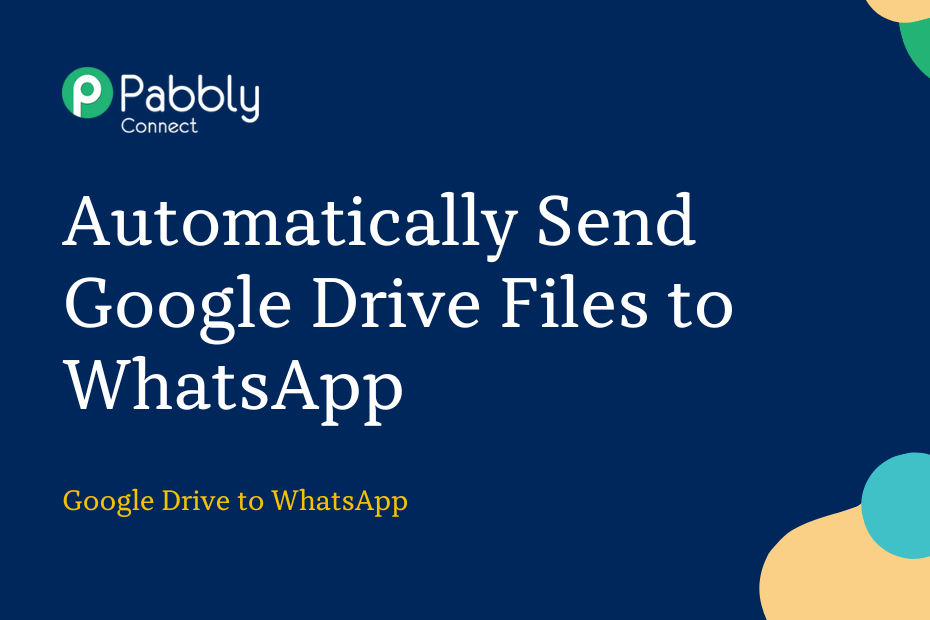In this section, we will discuss how you can integrate Google Drive with WhatsApp, following which, each time you upload a new file in Google Drive, it will automatically be shared with your team member on WhatsApp.
This automation requires a one-time setup, for which we will use Pabbly Connect.
We will first link Google Drive with Pabbly Connect to capture the files, then link Pabbly Connect with WhatsApp and send a message containing the link to the file.
Steps to Automatically Send Google Drive Files to WhatsApp
1. Sign In / Sign Up to Pabbly Connect and Create a Workflow
2. Establish a Connection between Google Drive and Pabbly Connect
3. Make the File Publicly Accessible
4. Setup WhatsApp Cloud API as the Action App to Send Messages
5. Compose a Message Template
6. Map the Necessary Fields
Step 1:- Sign In / Sign Up to Pabbly Connect and Create a Workflow
A. Sign In / Sign Up
To begin this process, visit Pabbly Connect and create your account by clicking on the ‘Sign Up Free’ button. You can also click on Sign In if you already have an account.
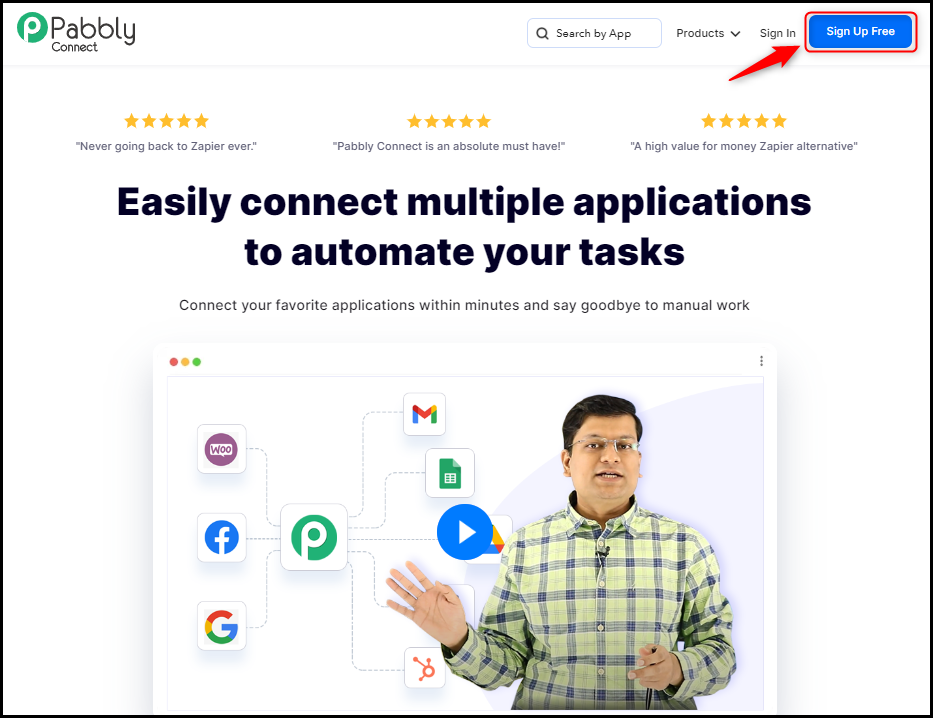
Click on the Pabbly Connect ‘Access Now’ button

B. Create Workflow
To create a new workflow, click the ‘Create Workflow’ button.
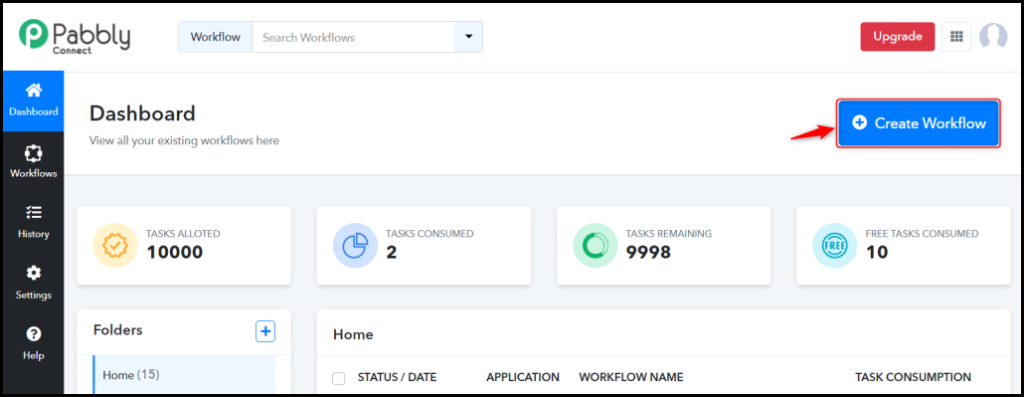
Name your workflow, and click on ‘Create’.
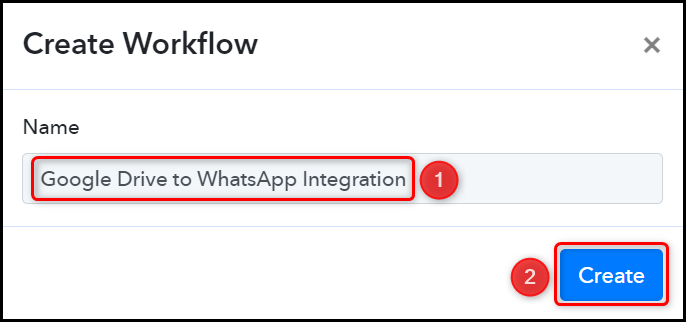
Step 2:- Establish a Connection between Google Drive and Pabbly Connect
We will now look at the steps through which we will establish a link between Google Drive and Pabbly Connect. This will help us to fetch the files from Google Drive.
A. Trigger App
Trigger allows us to choose the application that will receive the data for Pabbly Connect. In our case, it would be Google Drive
Choose ‘Google Drive’ as the Trigger App, select ‘New File’ as an Action Event, and click on ‘Connect’.
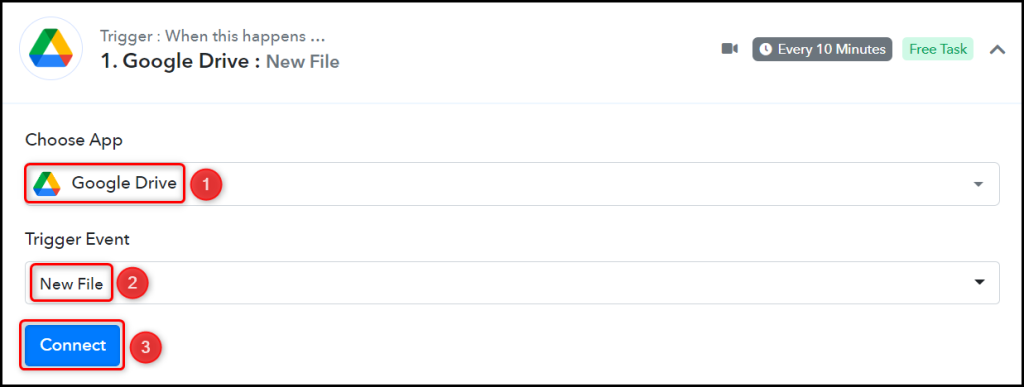
B. Connect Google Drive Account
To connect with your Google Drive account, select ‘Add New Connection’ and click on ‘Connect With Google Drive’. Also, grant the authorization.

Now, click on ‘Save & Send Test Request’.
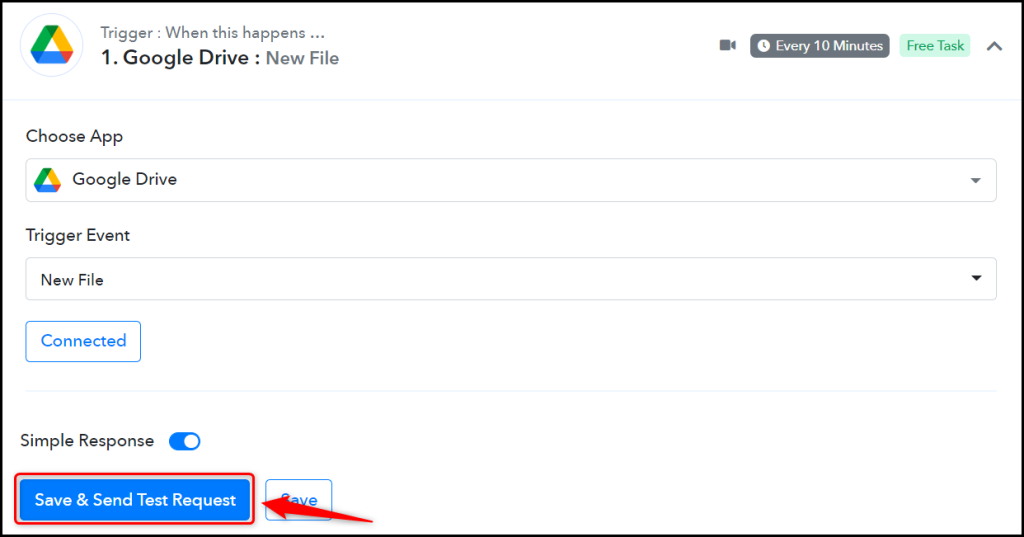
The moment you click on Save & Send Test Request, Pabbly Connect will capture the data of the latest file uploaded to your Google Drive account.
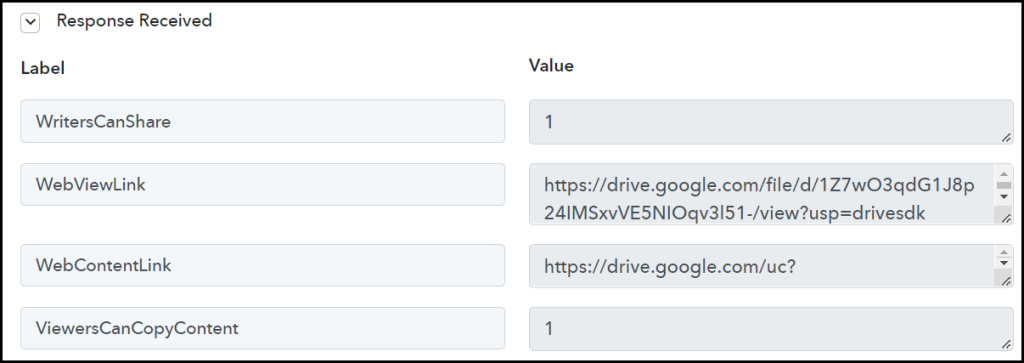
Step 3:- Make the File Publicly Accessible
Now that we have captured the desired file, we will make it publicly accessible, so that anyone with a link can view the uploaded file.
Choose ‘Google Drive’ as your Action App, select ‘Share the File with Anyone’ as an Action Event, and click on ‘Connect’.
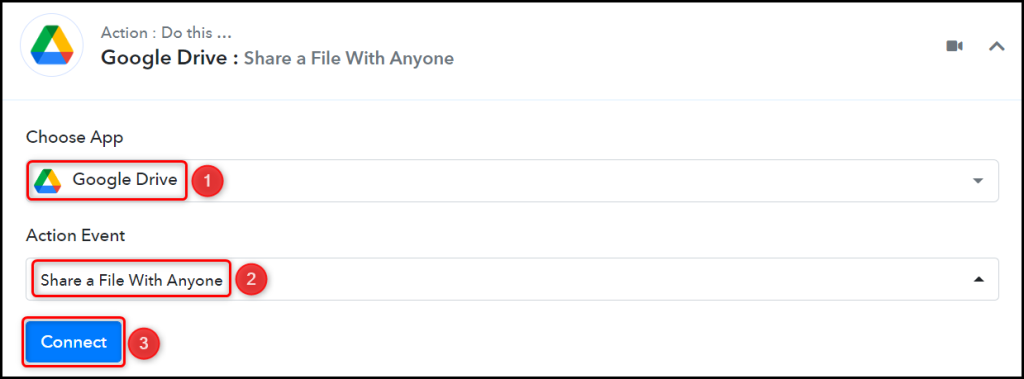
B. Establish Connection
Since we are already connected to the Google Drive account, all we need is to ‘Select Existing Connection’ and click on ‘Save’.
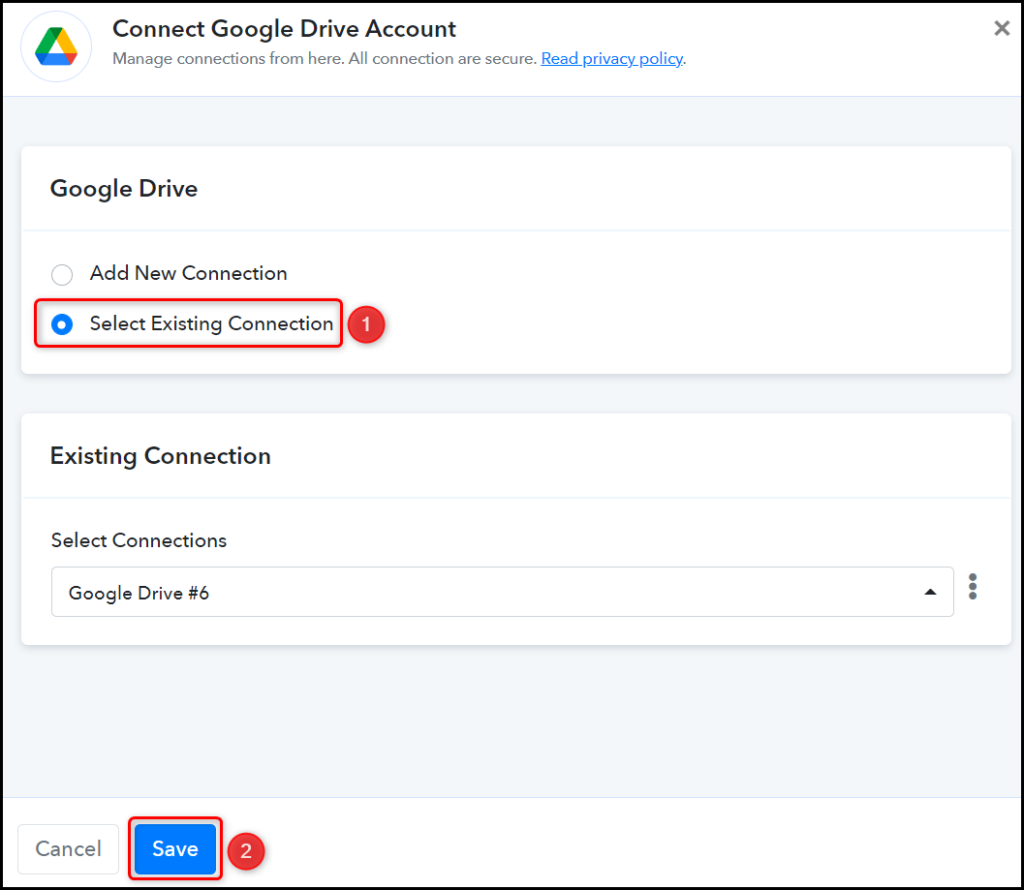
In the File ID field, switch on the ‘Map’ toggle, clear the field, and map the ID from the step above.
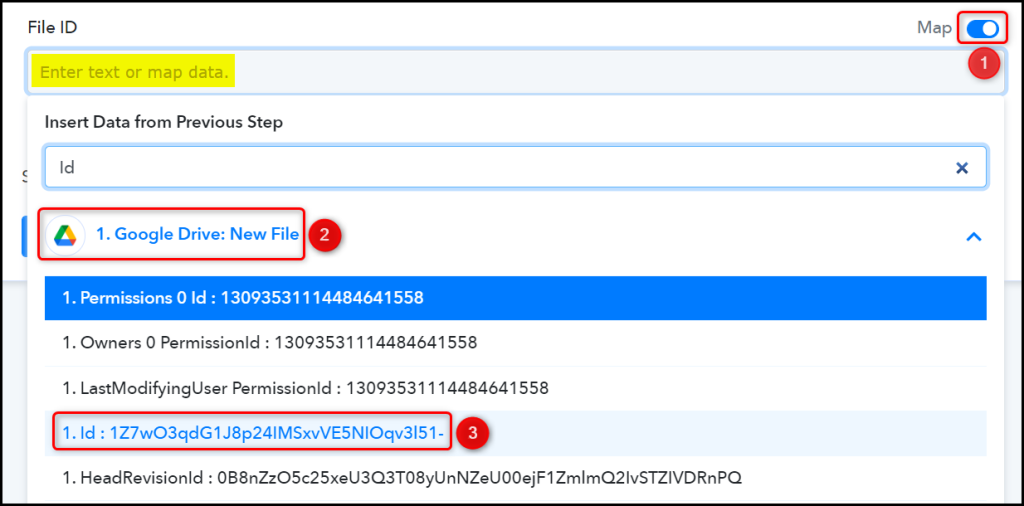

Click on ‘Save & Send Test Request’, and your file will be made publicly accessible.
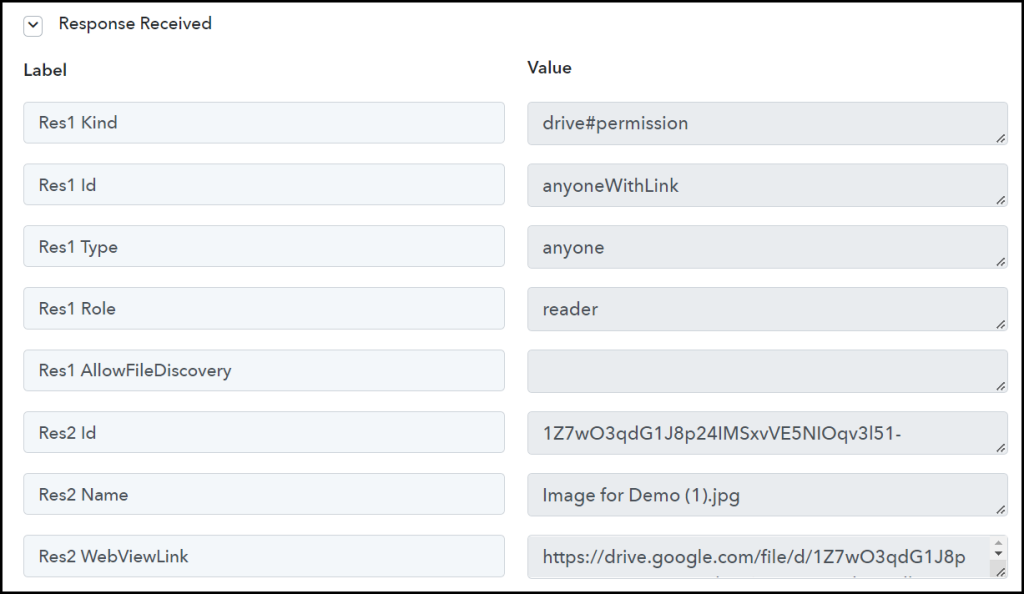
Step 4:- Setup WhatsApp Cloud API as the Action App to Send Messages
Upon uploading the file on Google Drive, we essentially want to send WhatsApp messages containing the link to the file. Thus, WhatsApp Cloud API will be our Action App.
Note: Follow steps 1 to 3 of this blog to create a new Whatsapp Business Cloud API account if you don’t already have one.
Add another Action Step to your workflow by clicking the ‘+’ button.

A. Action App
Choose ‘WhatsApp Cloud API’ as your Action App, select ‘Send Template Message’ as an Action Event, and click on ‘Connect’.
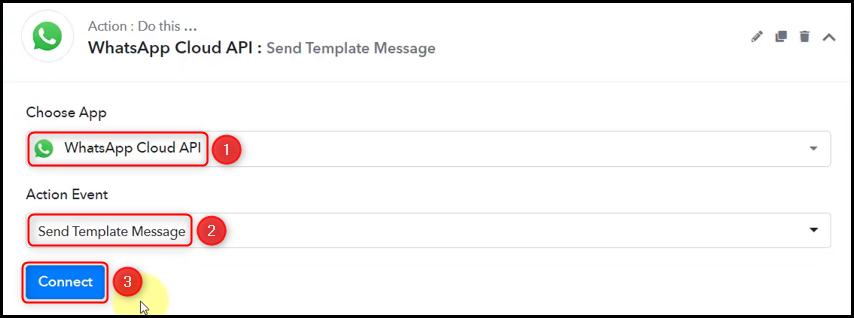
B. Connect WhatsApp Cloud API Account
To connect with your WhatsApp Cloud API account, select ‘Add New Connection’. You will be asked to enter your Permanent Token, Phone Number ID, and WhatsApp Business Account ID.
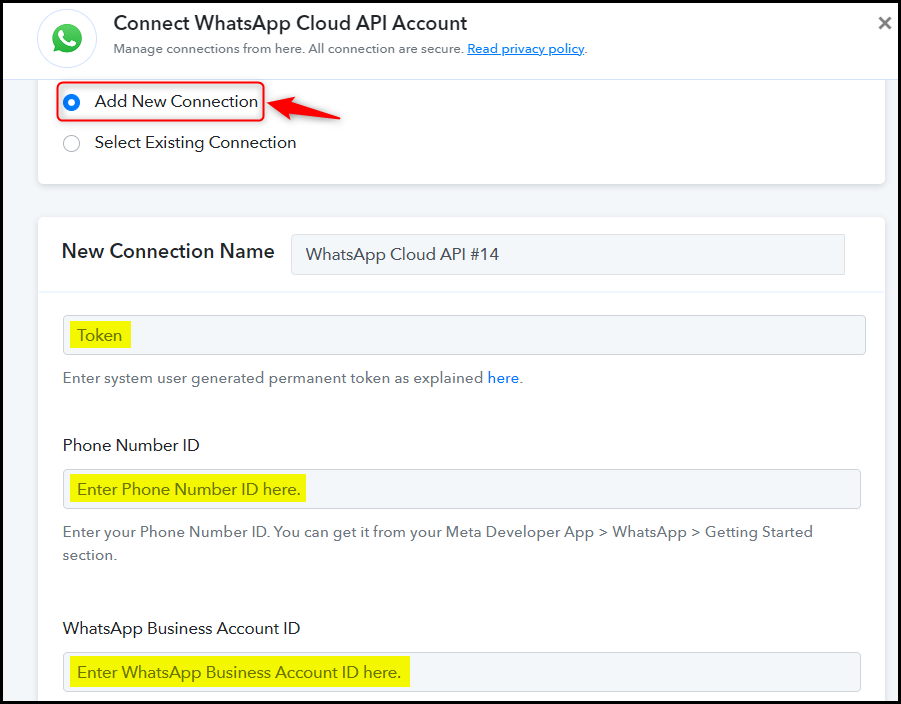
Go to your Facebook Developer dashboard, and copy the Phone Number ID and WhatsApp Business Account ID.
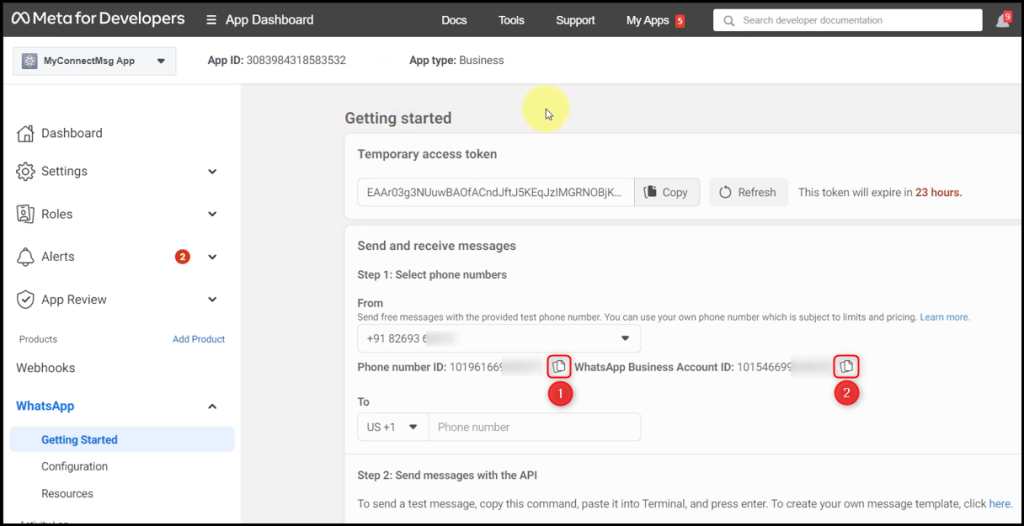
Paste both in their respective fields.
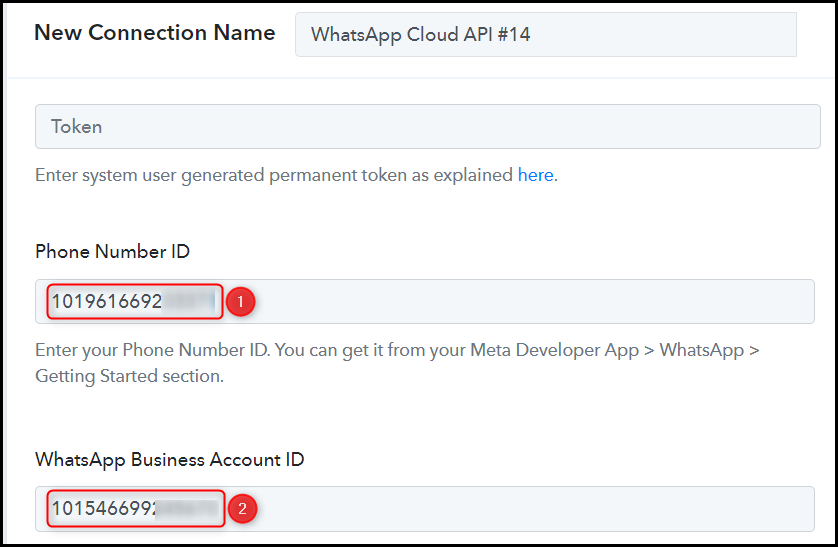
The Token visible on your dashboard is a temporary one that expires every 24 hours. For our workflow, we need a Permanent Token. You can generate a Permanent Access Token by following the steps given in this post.
Paste the Permanent Token, and click on ‘Save’.
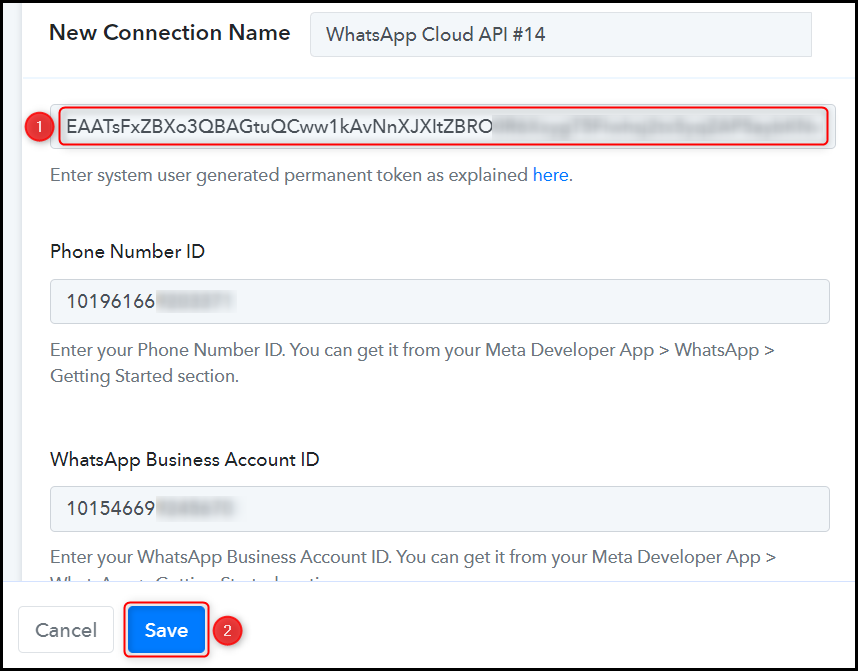
Step 5:- Compose a Message Template
You will be asked to fill up a few fields. You can either select your Template Name directly from the list if you already have one ready or create a new message template by following these steps.

A. Create a Message Template
Switch to your WhatsApp Cloud API dashboard, and click the ‘here’ hyperlink. You will be redirected to a new page.
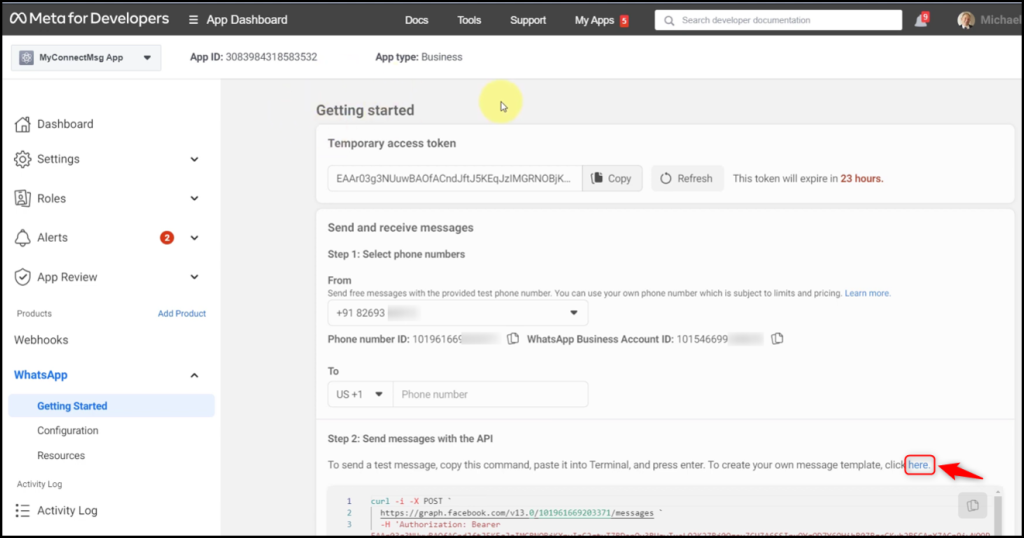
Click on ‘Create Message Template’.

Select a Category, Name the template and pick a Language. Click on ‘Continue’.
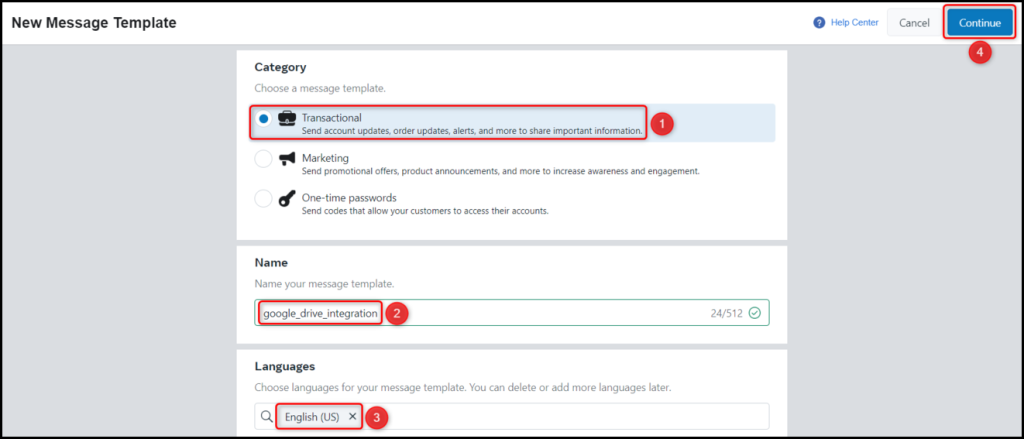
B. Body with Dynamic Data Tags
Type in your message in the Body field. To personalize your message, include Dynamic Data Tags in your template.
Dynamic Data Tags help us to include variables in our template, these variables will be replaced with actual data in your message. The actual data can be a name, an email address, date, time, ID number, etc. To add a dynamic tag to your template, write your variables between double curly braces {{variable}}.
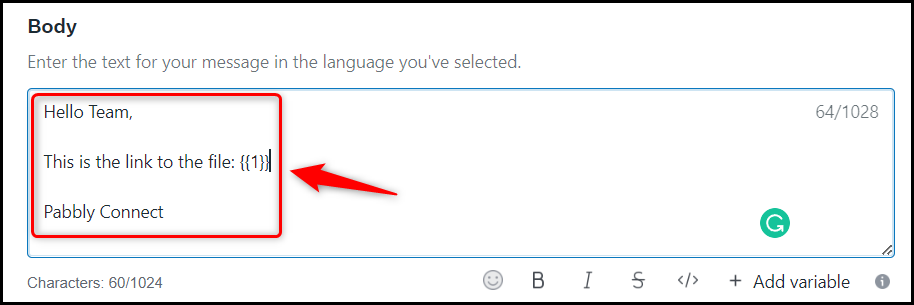
‘Submit’ your message and ‘Confirm’.

As you submit your template, it could be approved right away or go to Facebook for a manual review. This process may take anywhere from a few minutes to a few hours. Reload your page to see if your template is approved and available, as indicated by the green color.
Step 6:- Map the Necessary Fields
Now that you have connected your WhatsApp Cloud API account, all you need is to map the necessary details from the step above.
Select your Template Name.

Enter the Recipient Mobile Number along with the country code.

Remember the Dynamic Data Tags we talked about? Those tags will be replaced by the data present in Body Fields.
In Body Field, enter or map the link from the step above, and click on ‘Save & Send Test Request’.


As soon as you click on Save & Send Request, a WhatsApp message containing the link to the file will be sent to the recipient’s mobile number.
Note: Pabbly Connect checks for the data from Google Drive every 10 minutes, so any new file uploaded may not be shared immediately.

Our automation is complete. We have successfully integrated Google Drive with WhatsApp. Each time you upload a new file on Google Drive, it will now automatically be shared with team member on WhatsApp.
Sign Up for a free Pabbly Connect account, and start automating your business
Subscribe to our Youtube Channel for more such automation
For any other queries, visit our forum
